Electronic Music: Rhythm of the Future
Music has always been a universal language, an emotional outlet, and a cultural glue that binds people together. With the advent of technology, a new and captivating form of music emerged – electronic music. It's a genre that's always evolving, pushing boundaries, and redefining what we understand music to be. Let's explore this fascinating world together.
Understanding Electronic Music
Electronic music is a broad term used to describe music that employs electro musical instruments, digital instruments, and circuitry-based music technology. While traditional music is often created using acoustic instruments, music is primarily created using technology and software.
What sets electronic music apart is its versatility. It is not limited by physical constraints of traditional instruments and can therefore produce an extensive range of sounds and tones – from mimicking natural acoustic sounds to creating entirely new, unheard sounds. This musical genre breaks the barriers of conventional music, offering a space for boundless innovation and creativity.
Considering paper writer services? When academic pressures mount and deadlines approach, seeking professional assistance can be a wise decision. Writer services connect you with skilled experts who can meticulously craft well-researched papers tailored to your academic requirements. From essays to research papers, these services offer a range of options to suit your needs.
The Multifaceted Genres of Electronic Music
Electronic music, as a genre, is a diverse spectrum of sounds, beats, and rhythms. It has grown and expanded over the decades to encompass a plethora of sub-genres, each with its own unique style, technique, and cultural roots.
Drum and Bass:
Also known as DnB, Drum and Bass originated in England in the 1990s. It’s characterized by fast breakbeats, heavy bass and sub-bass lines, and often includes elements of many other music genres.
EDM (Electronic Dance Music):
This is often used as an umbrella term for all kinds of electronic music produced for the purpose of dancing. This genre saw significant growth in the 2000s and includes numerous sub-genres such as Big Room, Electro House, and Progressive House.
House music:
Emerging from the clubs of Chicago in the 1980s, house music is often characterized by its repetitive 4/4 beats, driving basslines, and catchy, soulful vocals. With its disco-inspired roots, house music is all about rhythm and groove. Variations of house music, such as deep house, tech house, and tropical house, each add their own unique twists to the foundational genre.
Techno:
Originating in Detroit in the 1980s, techno is known for its futuristic and often industrial vibes. Its signature sound comes from the use of repetitive beats, synthesizers, and a generally faster tempo than house music. Sub-genres of techno, such as minimal and dub techno, each carry unique characteristics within the techno umbrella.
Trance music:
Known for its emotive and uplifting melodies, trance music, which originated in Germany in the 1990s, features repetitive melodic phrases and a musical form that builds up and down throughout a track. It often aims to induce a trance-like state in the listener, hence the name. This service will help you with essays on the topic of music, in particular trance, as well as with any other task such as do my programming homework online.
Dubstep:
Hailing from South London in the late 1990s and early 2000s, dubstep is characterized by heavy bass, shuffled rhythms, and sparse beats. Its prominent sub-bass frequencies often require powerful sound systems to fully experience the intended effect. The genre has numerous offshoots, including brostep and post-dubstep, each carrying their own distinctive traits.
Ambient music:
Ambient music focuses on creating a specific atmosphere or mood, often incorporating natural sounds and noises into its composition. Pioneered by artists like Brian Eno in the 1970s, it’s designed to provide a relaxing, thoughtful backdrop rather than a focused listening experience. Ambient music varies widely, from ambient techno to dark ambient, each with their unique characteristics.
Tracing Back the Beat: History of Electronic Music
Electronic music’s roots can be traced back to the late 19th century with the invention of the Telegraphone, the first magnetic audio recorder. However, it wasn’t until the mid-20th century that music began to truly take shape.

The 1950s saw the rise of Musique Concrète, a form of music that utilized recorded sounds as raw material. In the 1960s, the invention of the Moog synthesizer, a new kind of instrument that could generate a wide range of sounds electronically, was a game-changer.

The 70s and 80s saw electronic music explode into the mainstream. Synthesizers became more accessible and were utilized in various music genres, from pop to rock and jazz. By the 1980s, music was a dominant force, shaping the soundscape of the era.

The 1990s to the present day saw the rise of sub-genres like techno, house, and trance, which now fill dance floors worldwide. Today, electronic music continues to evolve, with digital technology and software allowing for endless possibilities in sound creation and manipulation.
Masters of the Synth: Top Electronic Music Artists of All Time and Today





Many artists have contributed to the growth and popularity of music. Artists like Kraftwerk, known as the “Godfathers of electronic music,” brought the genre to the mainstream in the 1970s with their innovative use of synthesizers.
Daft Punk, an iconic duo from France, revolutionized the scene in the late 90s and 2000s with their fusion of house, funk, techno, and disco elements. Their 2013 hit “Get Lucky” is a perfect example of their revolutionary sound.
Modern artists like Marshmello, Diplo, and Martin Garrix continue to push the boundaries of the genre. Their catchy beats, innovative sound design, and ability to cross over into pop music have expanded electro music’s reach to wider audiences. There are great experts nursing essay writer on this platform who can help you with different essays and other tasks.
Spotlight: Juju & Jordash
In a landscape brimming with talent, Juju & Jordash, a duo comprised of Gal Aner and Jordan Czamanski, have successfully carved a distinctive niche for themselves. Based out of Amsterdam, they have grown to become a respected name in the music industry. Their music is a unique blend of improvisation and meticulous composition, setting them apart from other artists who typically rely on pre-sequenced tracks and mixes.
Juju & Jordash’s expansive discography covers a diverse array of sounds, stretching the boundaries of electronic music. Their tracks delve into realms of deep house, jazz-infused techno, psychedelic beats, and abstract electro. Each production is a testament to their versatility and their willingness to experiment and innovate. Their music, rich in texture and depth, reveals a breadth of influences, from 70s jazz fusion and 80s synthpop to Detroit techno and Chicago house.
Their album “Sis-boom-bah!” released in 2017, is a prime example of their innovative style. It is a beautiful labyrinth of sounds that mixes electronic beats with elements of jazz and dub. Tracks like “Herk,” “Rah-Rah,” and “Sis-boom-bah!” showcase their ability to create music that is both rhythmically complex and melodically compelling.
Juju & Jordash also shine in their live performances. Instead of relying on pre-recorded and pre-sequenced tracks, they create a large portion of their music in real-time. Using a blend of synthesizers, drum machines, and effect processors, they create an immersive soundscape on the fly. This approach leads to performances that are unique and cannot be replicated, adding a level of authenticity and spontaneity to their shows. Each performance is a new journey, keeping the audience on their toes, never knowing what to expect next.
Parties and Festivals
Experiencing electronic music live is an unforgettable sensory explosion, where the synergy between sound, lights, and crowd energy creates a transcendent experience. For electro music aficionados, there is a global array of festivals that provide not just the opportunity to witness the greatest talents in music but also offer a unique cultural and social experience.
Fortunately, there are professional services available that can help alleviate this burden. When I needed to write my lab report for my chemistry class, I turned to a reputable writing service that specializes in academic assignments. The process was straightforward: I simply submitted the details of my experiment, along with any specific requirements from my professor, and they took care of the rest.
Tomorrowland (Belgium)
Tomorrowland is the largest electronic music festival in the world. It’s known for its elaborate fairy-tale-like stages and impressive line-ups that cover a wide spectrum of electro music genres.
Ultra Music Festival (Miami, USA)
As one of the first major electronic music festivals in the United States, Ultra has been a trendsetter in the industry. Its line-ups regularly feature the biggest names in the EDM scene.

Electric Daisy Carnival (Worldwide)
Originally starting in Los Angeles, EDC now hosts events across the globe. EDC combines electronic music with a circus-like atmosphere, including rides and art installations.

Burning Man (Nevada, USA)
Burning Man is more than a festival; it’s a community, temporary city, and an experiment in self-expression. Its music line-ups feature a broad range of genres, including a substantial electronic music contingent.

Sonar (Barcelona, Spain)
Known for showcasing the most avant-garde acts in electronic music, Sonar is a three-day festival combining music, creativity, and technology.

Awakenings (Amsterdam, Netherlands)
As one of the most prominent techno festivals in the world, Awakenings is a must-visit for any fan of the genre.
Berghain (Berlin, Germany)
Berghain isn’t a festival but a nightclub. However, its reputation as the world’s capital of techno earns it a spot on this list. Its uncompromising approach to music selection and its enigmatic door policy have added to its mystique.

to its mystique. Movement Electronic Music Festival (Detroit, USA)
Detroit, the birthplace of techno, hosts this festival every Memorial Day weekend. The festival pays homage to the city’s rich musical history while also showcasing contemporary electromusic talents.
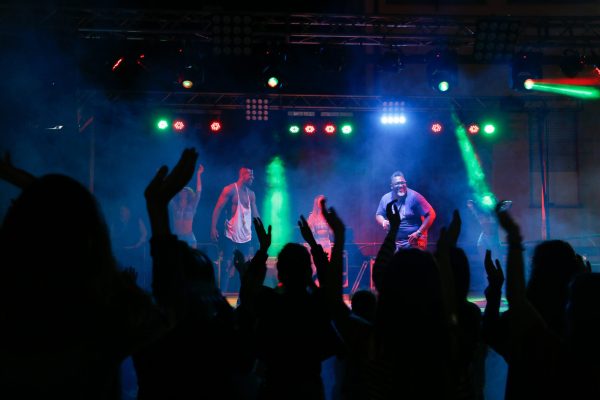
Boom Festival (Portugal)
Boom Festival is a week-long psychedelic experience that attracts artists and attendees from around the world. Its electronic music line-up focuses on psychedelic trance, or psytrance.

Time Warp (Mannheim, Germany)
Renowned for its state-of-the-art visual design and stellar line-up of techno’s finest, Time Warp is an immersive experience for techno lovers.
These festivals and venues are more than just places to listen to music; they are cultural landmarks that have shaped electromusic's history and evolution. Whether it's the industrial techno sound of Berghain or the cutting-edge performances at Sonar, these festivals and venues have been instrumental in pushing electronic music forward. No matter your preferred sub-genre, these events offer the chance to experience music in its purest form, surrounded by thousands of other fans who share the same passion.